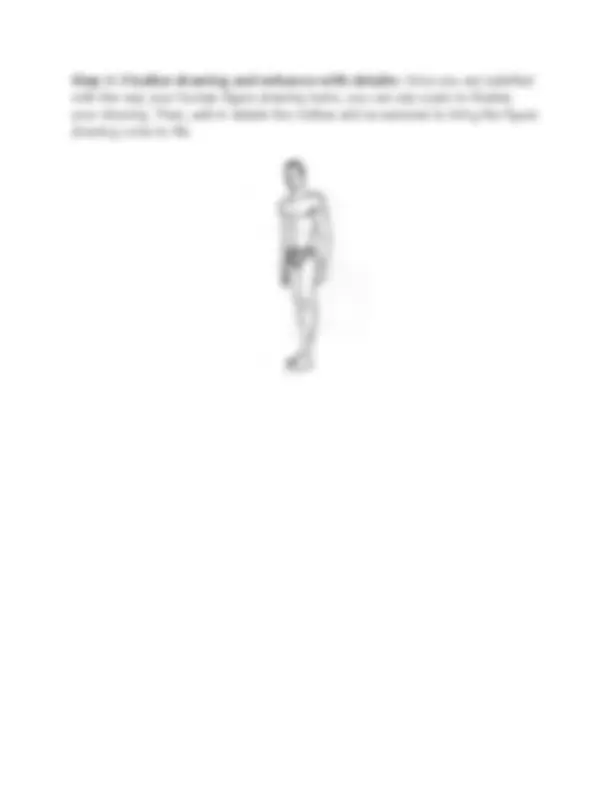



Study with the several resources on Docsity

Earn points by helping other students or get them with a premium plan


Prepare for your exams
Study with the several resources on Docsity

Earn points to download
Earn points by helping other students or get them with a premium plan
Community
Ask the community for help and clear up your study doubts
Discover the best universities in your country according to Docsity users
Free resources
Download our free guides on studying techniques, anxiety management strategies, and thesis advice from Docsity tutors
Mathematics Mathematics Mathematics
Typology: Schemes and Mind Maps
1 / 3

This page cannot be seen from the preview
Don't miss anything!


The Basics of Human Figure Drawing
Look at a child’s drawing of ‘My Happy Family’ and you will realize that drawing the human body is not child’s play. Surprising isn’t it? We look at ourselves in the mirror, everyday, we interact with people of every size and shape and yet, drawing a perfect imitation of the human body is one of the greatest mysteries known to us all. While many artists enjoy drawing landscapes, still others are fascinated with the human form. Leonardo da Vinci was one of the masters of human anatomy in art history, having spent years of discipline learning and practicing the art. Here we will attempt to demystify the process of human figure drawing for beginner artists in a few easy steps:
Step 1: Plan the Drawing: Begin by just drawing a few vertical and horizontal lines, making a rough estimate of the proportions of the body. Measure the amount of space the head would occupy, as well as the height ratio of the head to the body height. Keep in mind, that for an average human figure, the body height should be 7 and a half times that of the head. Lightly drawing 7 horizontal lines at this stage, for the relative placement of body parts, will help to ensure that you get the proportions of the human figure correct. The armpits would form the second line below the head, the hips would be the third and so on.
Step 2: Add basic shapes to represent body parts: Use circles, ovals, triangles and rectangles to add more substance to your vision of the human figure you are drawing. For instance, if you are drawing a fat man, you could begin by drawing a big oval for his torso. If you are drawing a short girl, you can combine a series of small ovals and circles.
Step 3: Sketch an outline of the basic structure: This step is important as you need to draw the figure in the most realistic way, paying attention to the angles and curves of each part of the body. Stronger pencil strokes can be used for more definition, for instance to show angular shoulders and softer lines can be used to illustrate feminine curves of the hips.